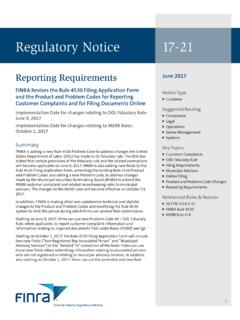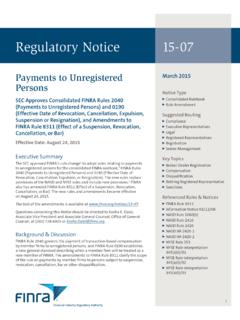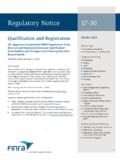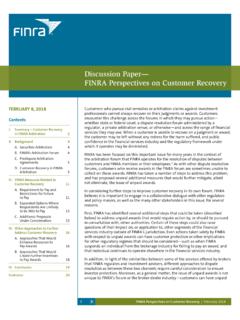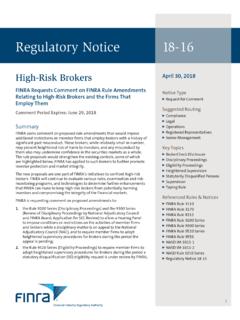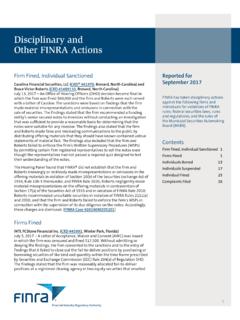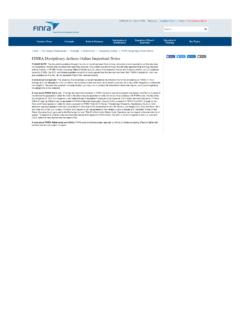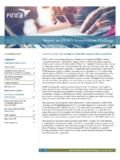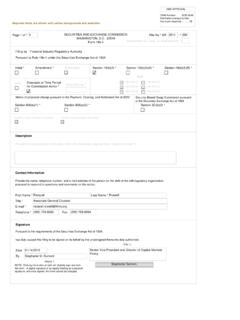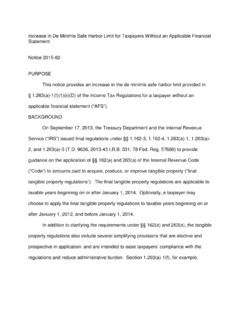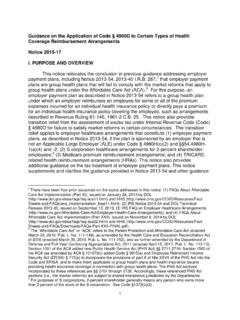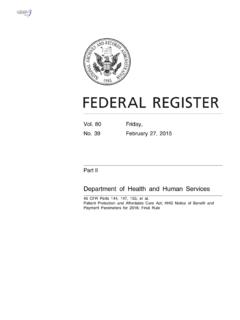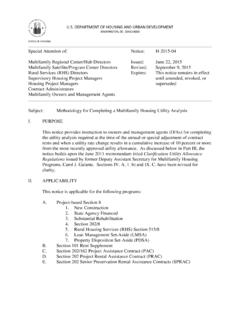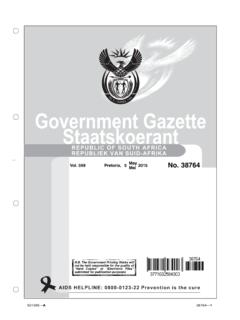Transcription of Regulatory Notice 15-33 - finra.org
1 1 Regulatory Notice 15-33 September 2015 Executive Summary Effective liquidity management is a critical control function at broker-dealers and across firms in the financial sector. Failure to manage liquidity has contributed to both individual firm failures and, when widespread, systemic crises. From an investor protection perspective, sound liquidity risk management practices enhance investor protection because they make it more likely that a firm s customers continue to have prompt access to their assets, even in times of is providing guidance on effective practices that senior management and risk managers at firms should consider and implement. This Notice is directed to firms that hold inventory positions or clear and carry customer transactions.
2 Other types of broker-dealers may also find this Notice is of value to them when assessing their own liquidity concerning this Notice should be directed to:00 Mark Frankenberg, Director, Risk Oversight and Operational Regulation, (646) 315-8816;00 Robert Mendelson, Senior Advisor, Risk Oversight and Operational Regulation, (646) 315-8660; or00 Anthony Sacco, Examination Director, Risk Oversight and Operational Regulation, (646) primary role of liquidity-risk management is ensuring the availability of cash or highly liquid assets to support a financial institution s funding needs under both normal and stressed conditions. To do so, a financial institution needs a rigorous prospective assessment of its sources of funds to meet obligations, the amounts it will need when a stress occurs, the behavior characteristics of funding sources, and the limitations that funding sources may have or to which they may become subject.
3 Notice Type00 GuidanceSuggested Routing00 Compliance00 Internal Audit00 Legal00 Risk Management Committee 00 Treasury and Finance OperationsKey Topics00 Financial Stress Tests00 Liquidity Risk Management PracticesReferenced Rules & Notices00 NTM 99-9200 Regulatory Notice 10-4400 Regulatory Notice 10-57 Liquidity Risk Guidance on Liquidity Risk Management Practices2 Regulatory Notice9l0yl6 l8a 15-33 Beginning in March 2014 and continuing into the first quarter of 2015 , finra conducted a review of the policies and practices at 43 firms related to managing liquidity needs in a stressed environment. The review had two broad purposes: to understand better firms liquidity risk-management practices and to raise awareness of the need for liquidity stress planning.
4 The review included assessing firm management s knowledge and understanding of the liquidity risks that their firm faced, the firm s ability to measure liquidity needs in stress situations, management s preparedness and plans for addressing such a scenario should it arise, and the specific steps the firm would take to address its firms reviewed comprised a wide range of clearing firms and large introducing firms with varying levels of capitalization. The business mix at these firms also varied, from firms that focused on one or two market sectors to firms that provide a full range of products and services. A number of the firms were affiliated with banks, including firms affiliated with banks. In some instances, the banking business was an adjunct to the broker-dealer business and in other instances the banking business was the primary business of the holding company group.
5 Of the 43 participating firms, 28 were part of a bank holding company group1 (11 bank holding company (BHC) or financial holding company groups, and 17 groups). Of the firms, nine were associated with BHCs that had greater than $50 billion of total consolidated assets, and two were affiliated with BHCs that had from $10 billion to $50 billion in total consolidated assets. The review consisted of two phases. The first phase required firms to calculate the impact on liquidity when five stresses were applied concurrently to the broker-dealer s business. The second phase allowed a firm to challenge the severity of the assumptions used in the test, describe mitigating action the firm would take and demonstrate the resources available to offset the stressed outflows of cash.
6 The results of our review of the 43 firms for effective and ineffective practices in meeting stressed outflows of funds are described in the Results section below. Planning for adverse liquidity conditions based upon stress tests is one way to protect against failure when extreme events occur. The practices described in this Notice are intended to inform senior management and risk managers at firms of steps that they should consider and implement. In general, each broker-dealer should review its liquidity condition under possible stress events and determine which liquidity management practices are best suited to its particular business. Similar to Regulatory Notice 10-57, this Notice is directed to firms that hold inventory positions or clear and carry customer transactions.
7 Other types of broker-dealers may also find this Notice is of value to them when assessing their own liquidity risks. Regulatory Notice 39l0yl6 l8a 15-33 Financial Responsibility Rules A fundamental purpose of the SEC s financial responsibility rules is to assure that broker-dealers have sufficient liquidity to conduct their business or to liquidate it without losses to customers. As part of a firm s obligation to supervise the businesses in which it engages, finra expects each firm to regularly assess its funding and liquidity risk management practices so that it can continue to operate under adverse circumstances, whether these result from an idiosyncratic or a systemic event. Sound liquidity risk management practices enhance investor protection because a firm s customers are more likely to continue to have prompt access to their in the past, finra has issued Notices addressing liquidity practices.
8 Notice to Members 99-92 reported on the results of a multi-year effort by examination staffs of the NASD, NYSE and SEC assessing broker-dealer risk management practices. This report set forth general risk management practices that were found to be sound, as well as describing shortcomings at certain Notice 10-57 outlined a number of steps that firms should consider in managing liquidity and funding risks. In addition to criteria for immediate escalation to senior management, the Notice noted 10 areas where appropriate broker-dealer staff ( , treasury) should consider reviewing with senior management on a regular basis formal risk reports both quantitative and qualitative that summarize key measures of funding and of the Stress Test and finra s Stress CriteriaFINRA s current review had two phases.
9 First, each participating firm computed a stress test for a 30-calendar-day period using specific stress criteria. These criteria were selected based, in part, upon our review and analysis of a number of broker-dealers whose businesses had failed during the past 30 years. The Phase 1 baseline stress test assumed limited or no mitigating action could be taken, so that the result in extreme stress could be observed. The test also assumed that the firm would fulfill all of its contractual obligations as would its counterparties. We believe that these assumptions reflect what may occur in a real idiosyncratic stress Phase 2 of the stress test finra met with each participating firm to discuss baseline stress results.
10 If any liquidity shortfall resulted during the 30-day period tested during Phase 1, the firm was given the opportunity to identify any mitigating action that it expected to take to ameliorate the shortfall. Phase 2 also involved a discussion of contingent funding sources that a firm expected to be available to offset any stressed outflows, including commitments and contingencies from affiliates and other lenders. A firm that is part of a holding company group, as many of the firms are, was expected to conduct this analysis 4 Regulatory Notice9l0yl6 l8a 15-33and have contingency funding plans at the broker-dealer Planning at the broker-dealer level supplements the corporate group s planning at the holding-company level.
